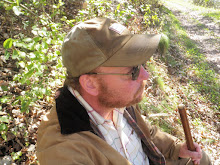Cooped up in the Midwest winter, I decided to practice a bit of production tying. The aim was to produce a set of sample flies to display at shows, and
First off, I discovered to my dismay that this kind of tying can be tedious. In a production or commercial run of flies, every fly must be almost exactly the same. That means heads must be uniform, hackle and wing lengths measured and trim, and proportions correct.
Until one tries this for real, it seems easy. Take ten flies and look at them separately, and they look fine. Then place them close together and voila! we see differences. The old Sesame Street game of “One of these things is different/not quite the same” comes to mind.
I frowned and scratched my head. When I examined the ever-so-slight differences in the flies, I discovered that often it was related to selection of materials. One wing was tied denser than another due to a few too many black bear hair fibers, or the hackle lengths were not uniform. There was also the human factor at work, but the pre-selection of materials, and laying things out properly solved the issue of my mind wandering when reaching for fur or feather while contemplating Mahler’s ninth symphony.
So here is what I learned:
Choose the hook sizes first and lay them out.
Pre-select the winging material and collar or throat hackles. These are the two material areas where careless prep work can sink a fly.
Place a piece of cork or Styrofoam near the vise, and place the completed flies there before lacquering. This will allow one to check exact proportions.
Dress at least half a dozen flies of the same size and pattern at the same time.
Do not answer the phone or get distracted.
Too much
From the left: Rusty Rat, Will Taylor Special low water, Silver Doctor low water, Laxa Blue varient, Unnamed winter fly, and the Blue Bear. The last two are winter dressings, while the others are intended as summer flies.














